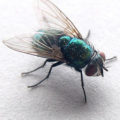
University of Texas Southwestern Medical Center pharmacologists studying protein evolution believe they have unlocked the secrets that nature uses to design proteins. They have now used these “rules” to create artificial proteins that look, and appear to function, just like their natural counterparts. The researchers said they didn’t set out to make artificial proteins in the lab, but rather to discover the rules that nature and evolution have used to design proteins.
Proteins are made from amino acids, molecules that are strung together in long chains. A protein’s biological function is determined by the arrangement of these amino acids and also the shape of the protein.
Previous research had shown that for a given group of related proteins, all group members shared common structures and functions. By examining more than 100 members of one protein family, the researchers found that the proteins shared a specific pattern of amino acid selection rules that were unique to that family. “What we have found is the body of information that is fundamentally ancient within each protein family, and that information is enough to specify the structure of modern-day proteins,” Dr. Ranganathan explained.
“Our work suggests that modern-day proteins have likely inherited much of the information specifying their structure and basic aspects of function from their ancestors, but it is also possible that they have been fine-tuned over time to have their own idiosyncratic features in specific cells,” said Dr. Ranganathan. “We are suggesting that the functions proteins have today are the result of fine-tuning a basic ancestral template that we have now figured out. The rules we have extracted from the evolutionary record of proteins contain a substantial fraction of the information required to rebuild modern-day proteins.”
The researchers tested their newly derived “rules” by feeding them into a computer program that generated sequences of amino acids which were then used to create artificial genes. Once inserted into laboratory bacteria, the new genes produced artificial proteins as predicted.
But will these artificial proteins function like natural proteins? “We found that when isolated, our artificial proteins exhibit the same range of structure and function that is exhibited by the starting set of natural proteins,” Dr. Ranganathan said. “The real test will be to put them back into a living organism such as yeast or fruit flies and see how they compete with natural proteins in an evolutionary sense.”


















Comments are closed.